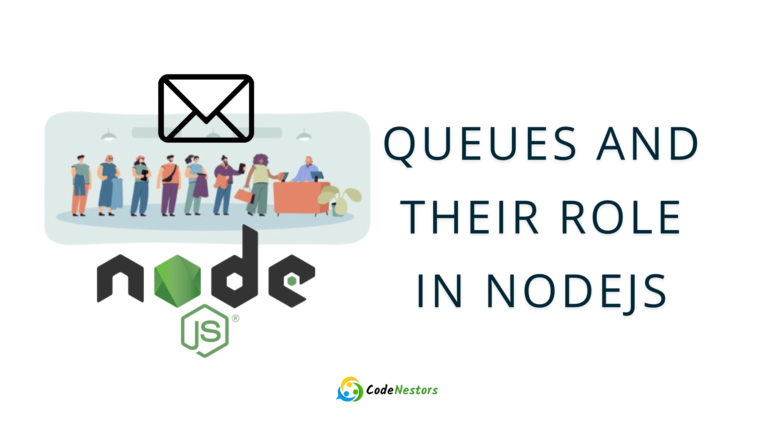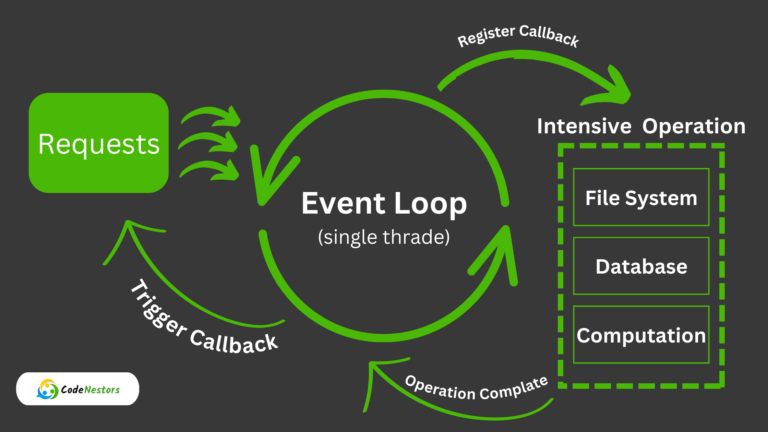What is Redis and Why Redis is important for E-commerce website

Redis an open-source, in-memory data structure store has transformed the landscape of data management and caching with its lightning-fast performance and versatile capabilities. Redis isn’t just a database, it’s a catalyst for innovation, enabling businesses to build resilient, high-performance applications. Deploying Redis effectively involves understanding its diverse use cases and optimizing its configurations to meet specific application requirements. Let’s delve into practical case studies that highlight the varied Redis deployments across different industries and scenarios.
What is Redis?
Redis, an acronym for Remote Dictionary Server, is an open-source, in-memory data structure store used as a database, cache, and message broker. It supports a variety of data structures including strings, hashes, lists, sets, and more. Thanks to its high-performance capability, Redis is used by giants like Twitter, GitHub, and Snapchat.
Why is Redis Essential for an E-commerce Website?
E-commerce websites are an amalgamation of diverse features such as shopping carts, user sessions, product catalogs, and real-time analytics. Redis plays an integral role in making these components run efficiently.

1. Caching in E-commerce:
In the realm of e-commerce, speed and responsiveness are paramount. Redis serves as a robust caching layer, reducing database load and enhancing the overall shopping experience. Take, for instance, a case where Redis is deployed to cache product catalogue information, user session data and frequently accessed content. By storing this data in memory, Redis significantly reduces query times, enabling quick access to product details, user preferences and cart information.
2. Real-Time Analytics:
For platforms dealing with real-time analytics, Redis acts as a crucial component in managing incoming data streams efficiently. Consider a scenario where a social media analytics tool utilizes Redis as a pub/sub system. It ingests high volumes of data, processes it in real-time and distributes relevant insights to subscribers. By leveraging Redis pub/sub feature the tool ensures rapid data dissemination, enabling instantaneous updates for monitoring trends, user engagement and sentiment analysis.
3. Session Store in Gaming:
Online gaming platforms heavily rely on session management to handle user authentication, game state storage and real-time interactions. Redis serving as a session store, maintains session data for active users. In a gaming environment, Redis can efficiently handle millions of concurrent sessions, allowing seamless gameplay experiences, quick matchmaking and smooth communication between players.
4. Geospatial Data and Mapping:
Location-based services and mapping applications leverage Redis geospatial data capabilities. A ride-sharing app, for instance, can employ Redis to store driver and user locations, facilitating quick proximity searches and route optimizations. Redis geospatial indexes enable efficient querying of nearby drivers, ensuring swift and accurate driver allocation for ride requests.
5. Message Queues and Background Jobs:
In distributed systems, message queues play a pivotal role in handling asynchronous communication between services. Redis’ robustness extends to its functionality as a message broker, aiding in managing background jobs and queuing system tasks. By employing Redis’ list data structure or its reliable messaging features, developers can orchestrate background tasks, ensuring scalability and fault tolerance within the system.
Key Considerations for Successful Redis Deployments
Deploying Redis effectively requires a comprehensive understanding of its features and strategic considerations to ensure optimal performance and reliability. Let’s delve deeper into the critical factors that contribute to successful Redis deployments.
1. Data Persistence Strategies:
Redis primarily stores data in memory for lightning-fast access. However, ensuring data durability involves implementing appropriate persistence mechanisms. Consider using
Snapshots: Periodic snapshots to disk for backup and recovery purposes.
Append Only Files (AOF): Logging all write operations to enable data recovery in case of crashes or system failures.
Combining Both: Employing a hybrid approach by utilizing both snapshots and AOF to balance performance and data safety.
Understanding the trade-offs between these persistence methods is crucial in aligning Redis configurations with the desired level of data durability and performance.
2. Scaling Strategies:
As the application load increases, scaling Redis becomes imperative for maintaining performance. Several scaling approaches include
Sharding: Distributing data across multiple Redis instances to distribute the load.
Clustering: Utilizing Redis Cluster for automatic sharding and high availability.
Sentinel: Implementing Redis Sentinel for monitoring, failover and automatic recovery in case of node failures.
Choosing the appropriate scaling strategy depends on the application’s requirements for performance, fault tolerance and data consistency.
3. Security Measures:
Safeguarding sensitive data stored in Redis is paramount. Implement robust security practices such as
Authentication: Configuring strong passwords to restrict unauthorized access.
Encryption: Employing encryption mechanisms to protect data both in transit and at rest.
Network Security: Implementing network-level security measures to prevent unauthorized access to Redis instances.
Prioritizing security measures ensures data integrity and confidentiality, especially when dealing with sensitive user information.
4. Monitoring and Optimization:
Continuous monitoring and optimization are vital for maintaining Redis performance. Key considerations include
Performance Metrics: Regularly monitoring key performance indicators like memory usage, throughput and latency.
Resource Optimization: Tuning Redis configurations based on usage patterns and workload characteristics to optimize resource utilization.
Automated Alerts: Setting up alerts for critical thresholds to proactively address potential issues.
Implementing robust monitoring tools and strategies helps in identifying and addressing performance bottlenecks or potential system failures promptly.
Everything Know About React Server Side Rendering(SSR)
5. High Availability and Disaster Recovery:
Designing Redis deployments with high availability and disaster recovery mechanisms is essential. Strategies include:
Replication: Setting up master-slave replication to ensure data redundancy and failover capabilities.
Backup and Restore: Regularly backing up Redis data to facilitate quick recovery in case of data corruption or loss.
Failover Testing: Periodically testing failover mechanisms to ensure their readiness during actual system failures.
Prioritizing high availability and disaster recovery measures minimizes downtime and ensures business continuity.
Redis Implementation in E-commerce
Implementing Redis in your e-commerce website amplifies its performance multifold. It is simple to integrate and can be used alongside your existing technology stack. Let’s take a closer look at how Redis implementation elevates your website.
Real-Time Inventory Management:
Redis maintains the stock inventory in real time which helps in providing accurate product availability information to the customers. This eliminates overselling and keeps customers satisfied with accurate inventory data.
High-Speed Cart Operations:
Redis can store and retrieve shopping cart data at unparalleled speed. This ensures a smooth checkout process, reducing cart abandonment and enhancing customer experience.
Effortless Scaling:
Redis allows you to scale your operations when your website traffic surges, ensuring your website’s performance remains uncompromised during peak shopping times.
Implementing Redis with Next.js and Node.js
Building a high-performance e-commerce website involves several steps. However, incorporating Redis into your Next.js and Node.js application is quite straightforward. Below, you’ll find a step-by-step guide for the implementation.
Step 1: Install Redis
To get started, ensure Redis is installed in your development environment. Check out the official Redis documentation for installation instructions tailored to your system.
Step 2: Set Up Your Node.js Backend
First, initialize your Node.js project by running npm init in your terminal. After setting up, install the necessary dependencies, including express, redis, and dotenv, for managing environment variables.
npm install express redis dotenvCreate a server.js file and set up a basic Express server.
const express = require('express');
const app = express();
const port = process.env.PORT || 3000;
app.listen(port, () => {
console.log(`Server is running on port ${port}`);
});Step 3: Connect Redis with Node.js
To establish a connection between Redis and your Node.js backend, create a redis-client.js file.
const redis = require('redis');
const client = redis.createClient({
host: process.env.REDIS_HOST,
port: process.env.REDIS_PORT,
password: process.env.REDIS_PASSWORD
});
client.on('error', (err) => {
console.log("Error " + err)
});
module.exports = client;Step 4: Integrate Redis into Your Next.js Application
Create a new .env.local file in the root of your project and add your Redis details.
REDIS_HOST='hostname'
REDIS_PORT='portnumber'
REDIS_PASSWORD='password'Then, in your server.js file, import the Redis client and use it to create, read, update, or delete operations in your application.
const client = require('./redis-client');
// Example to set Redis Key
client.set('myKey', 'Hello Redis!', (err, reply) => {
console.log(reply);
});
// Example to get Redis Key
client.get('myKey', (err, reply) => {
console.log(reply);
});Through these steps, you can successfully incorporate Redis into your Next.js and Node.js application, enhancing the efficiency and performance of your e-commerce website. Remember, Redis is an essential tool for managing user sessions, caching pages, and real-time analytics, all of which contribute to a smoother shopping experience for your users.
Conclusion: Make the Smart Move with Redis
Redis’s versatility, speed and flexibility make it an indispensable tool across various domains. However, deploying Redis effectively necessitates a deep understanding of its features, coupled with tailored configurations to suit specific use cases.
As organizations continue to innovate and leverage data-driven solutions, Redis remains a linchpin in building scalable, high-performance applications. By exploring diverse case studies and understanding best practices, businesses can harness the full potential of Redis, driving enhanced user experiences and robust system architectures.
If you haven’t leveraged Redis yet, it’s time to make your move. Redis is no longer just an option; it’s a necessity. Implement Redis to supercharge your e-commerce website today!
FAQ
Can Redis handle “real-time analytics” efficiently in practical deployments?
Yes, Redis excels in handling “real-time analytics” by swiftly processing high-throughput data streams, enabling quick insights and analysis for various industries leveraging “real-time analytics” solutions.
How to improve “microservices” using Redis?
Redis acts as a high-performance caching solution in “microservices” architectures, optimizing data retrieval and reducing latency across distributed systems, leading to improved “microservices” performance.
What role does Redis play in “session management” across “cloud” environments?
Redis serves as a robust solution for “session management” across “cloud” infrastructures, offering quick access to session data and ensuring seamless user experiences in cloud-based applications.




